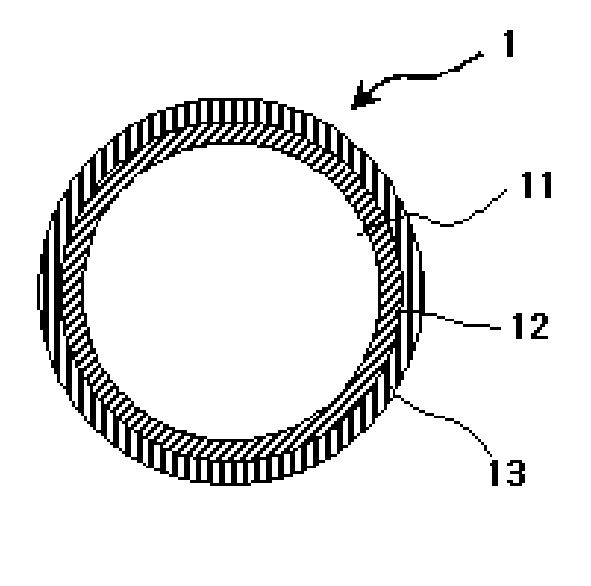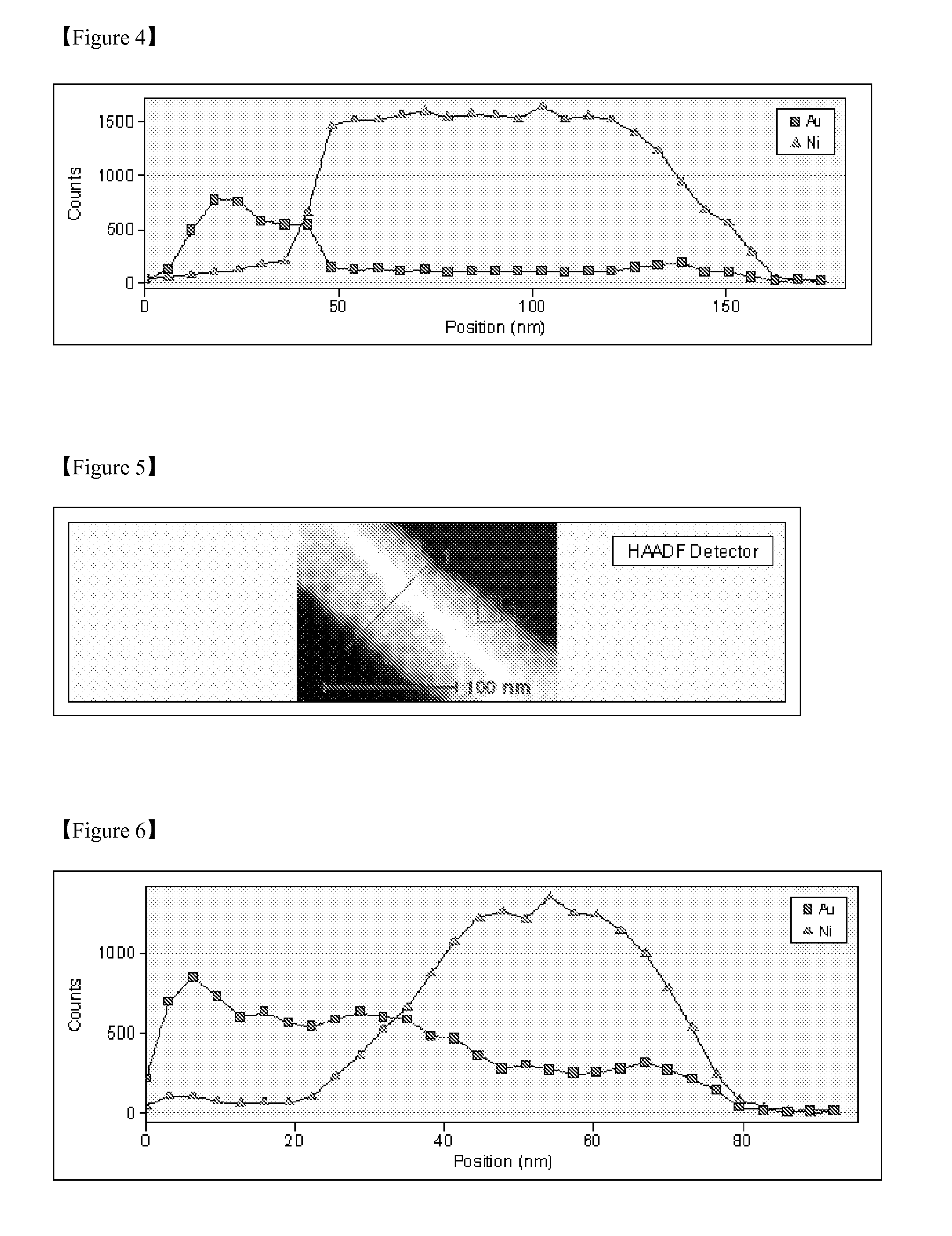Conductive Particles Comprising Complex Metal Layer With Density Gradient, Method for Preparing the Particles, and Anisotropic Conductive Adhesive Composition Comprising the Particles
- Summary
- Abstract
- Description
- Claims
- Application Information
AI Technical Summary
Benefits of technology
Problems solved by technology
Method used
Image
Examples
examples 1 to 4
(1) Selection of Particles
[0056] Polydivinylbenzene (PDVB) polymer particles are selected as base particles. Each of the polymer particles has a CV value of 4.5% and an average particle size (8.9 μm, 5.2 μm, 4.1 μm and 3.7 μm) indicated in Table 1 below.
TABLE 1Example No.Particle size of polymer (μm)Example 18.9Example 25.2Example 34.1Example 43.7
(2) Pretreatments
[0057] 20 g of each of the PDVB particles is dipped in a 2% surfactant solution for 10 minutes to defat the surface of the PDVB particles. The surfactant solution can be readily prepared by processes well known to those skilled in the art. Thereafter, the defatted PDVB particles are etched by dipping the particles in a mixed solution containing 10 g / L chromic acid and 400 g / L sulfuric acid for 10 minutes to form anchors on the PDVB particles, dipped in an aqueous tin (II) chloride solution (1 g / L) for 3 minutes, filtered, and washed to catalyze and activate the surface of the polymer particles. The collected polymer par...
examples 5 to 10
(1) Production of Anisotropic Conductive Films
[0064] In Examples 5 to 10, anisotropic conductive films are produced using conductive particles having a continuous density gradient of Ni and Au, in accordance with the following procedure.
[0065] 15 parts by weight of a bisphenol A epoxy resin having an epoxy equivalent of 6,000 and 7 parts by weight of 2-methylimidazole as a curing agent are dissolved in a mixed solvent of toluene and methyl ethyl ketone, after which 2 to 15 wt % of conductive particles and a silane-based coupling agent are dispersed in the solution. The conductive particles are prepared in the same manner as in Example 1, except that the content and size are changed to those indicated in Table 4 below. The resulting dispersion is coated on a PET release film, and dried to produce a 25 μm thick anisotropic conductive adhesive film.
[0066] An anisotropic conductive film is produced from the anisotropic conductive adhesive film so as to have the following dimensions. ...
PUM
| Property | Measurement | Unit |
|---|---|---|
| Fraction | aaaaa | aaaaa |
| Fraction | aaaaa | aaaaa |
| Thickness | aaaaa | aaaaa |
Abstract
Description
Claims
Application Information
 Login to View More
Login to View More - R&D
- Intellectual Property
- Life Sciences
- Materials
- Tech Scout
- Unparalleled Data Quality
- Higher Quality Content
- 60% Fewer Hallucinations
Browse by: Latest US Patents, China's latest patents, Technical Efficacy Thesaurus, Application Domain, Technology Topic, Popular Technical Reports.
© 2025 PatSnap. All rights reserved.Legal|Privacy policy|Modern Slavery Act Transparency Statement|Sitemap|About US| Contact US: help@patsnap.com



